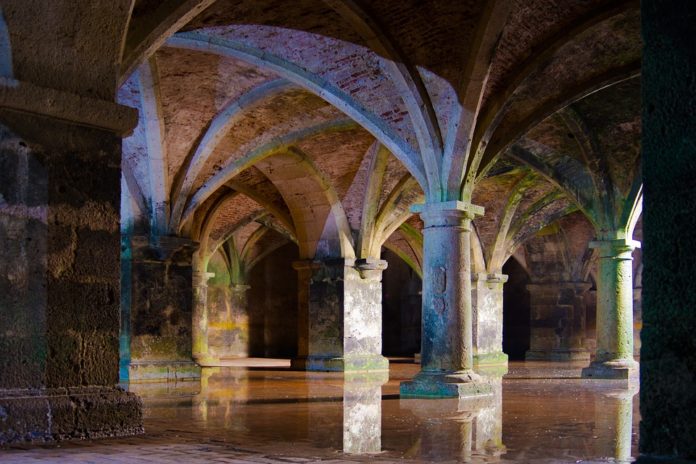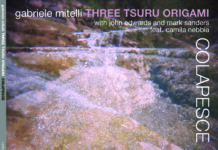1
Twenty-five years ago, the Deep Listening Band was established as a result of a music performance in a resonant space. Since then the group, whose core consists of founders Pauline Oliveros and StuartDempster, has retained as a central aspect of its sound art and philosophy the use of space as an active element in group improvisation.
Oliveros (1932, Houston Texas, USA) was a key figure in the postwar performing arts avant-garde on the American West Coast. In the 1950s she studied composition at San Francisco State College, where she also played French horn and tuba. She was a student of Robert Erickson, and went on to become one of the charter members of the San Francisco Tape Music Center, an important locus not only for Bay Area art music experimentalists, but for the nascent psychedelic counterculture as well. Her early experiments with tape music and electronic sound were innovative and laid the groundwork for her later development of the signal processing system she uses with her main instrument, the virtual accordion. Dempster (1936 Berkeley California, USA) also studied composition at San Francisco State College, where he met Oliveros as an undergraduate. He became involved with Bay Area experiments in composition, improvisation and performance while at the same time serving as first trombone for the Oakland Symphony Orchestra. Dempster’s virtuosity as an instrumentalist led Berio to write Sequenza V (1966) for him, and in 1979 he published The Modern Trombone: A Definition of Its Idioms, a classic work that drew on his knowledge of the instrument’s technical and theoretical possibilities.
Oliveros and Dempster, along with vocalist/composer Peter Ward, founded the Deep Listening Band after the three played and recorded inside the Fort Worden Cistern in Washington State USA. The cistern, since renamed the Dan Harpole Cistern, is a cavernous underground space two hundred feet in diameter and fourteen feet deep, which was originally used to store two million gallons of water. After the fort closed and the cistern was emptied the space was used for music performances, which could take advantage of the unique acoustics. The cistern has a 45-second reverberation time and a system of structural supports that reflect sounds and in the process set up an unusually complex relationship among overtones. The performance that Oliveros, Dempster and Ward recorded in the cistern was released in 1989; to mark the 26thanniversary of the release the Deep Listening Band–Oliveros and Dempster along with guests Jonas Braasch (soprano saxophone), Jesse Stewart (percussion), Johannes Welsch (gongs), Jeff Pratt (audio engineering) and Ione (vocals)—issued a CD containing selections from work performed during a residency at Canada’s Dunrobin Sonic Gym in October 2013, in which the group used an electronic program to simulate the Harpole Cistern’s acoustics. The selected performances were released as Dunrobin Sonic Gems [DL-47-2014]
2
All spaces affect the sounds occurring within them. The acoustic properties of any given place will, subtly or not, be an active participant in the creation of the sound. Some spaces are such that their effect on sound production moves from the more-or-less unnoticed background to the foreground and makes itself felt directly through its modification of the pitch, intensity and harmonic structure of the music. In more extreme spaces, like the Harpole Cistern or the Tomba Emmanuelle in Oslo, Norway, the quantitative difference a factor like reverb makes on sound will become a qualitative difference easily perceptible to performer and listener alike. Space is no longer a container that influences sound around its edges, as it were—rounding it or modifying the harmonic profiles of the tones played; rather it becomes a factor shaping the sonic possibilities at the heart of what can be played.
This is abundantly true of the Dunrobin recording, which consists of two lengthy, largely meditative improvisations following a long invocation by vocalist Ione. (In keeping with much of Oliveros’ work, the Dunrobin performances seem aimed as much at extra- or non-musical ends as at purely musical ends.)
All of the instruments used are capable of sustained pitches or sounds; given the long reverb time the tones from an individual instrument can accumulate into a virtual choir. This is a peculiarly temporal effect of the reverb: It has the ability to collapse time in that past tones stay in the air long enough to underlie and harmonize with tones produced the ever-moving present. As a result, much of the music consists of slowly moving planes of sound whose edges blur into each other. Tones have a tendency to stretch out to lengths that render them environments rather than discrete sounds or musical phrases; the low registers of Dempster’s trombone and didjeridu are especially sonorous in this regard. But this perceived blurring also arises from the difficulty in identifying specific instruments in the mix, although at times the soprano saxophone makes itself unmistakably heard in relatively rapid lines pushing back against the surrounding sound layers.
3
The Dunrobin performances show how room acoustics—real or electronically recreated—can produce fused sounds from individual or multiple instruments. The extreme reverberation time of the cistern simulation takes a tone or line, “copies” it and adds it to a stacked sonority that fuses into a complex sound that is voluminous enough to seem to extend in all directions. In SoundStructure in Music composer Robert Erickson identified what he termed a three-dimensional pitch space—that is, the tendency of musical textures to seem extended in space, with low frequency pitches being perceived as providing a wide foundation for more narrowly extended higher-pitched tones. The cistern simulator seems designed to dramatize Erickson’s point with the way it weaves dense, cumulative textures out of individual lines which seem to sit over broad, pervasive low pitches.
As developed by the Deep Listening Band, these fused sounds represent an instance of harmony without progression. Although emergent harmonies are plentiful, they are non-functional and more or less free-standing. Without linear drive harmony is associative, which is to say based on a dynamic of simultaneous interconnection rather than directional implication. Linearity here gives way largely if not entirely to verticality. And it may well be that the non-hierarchical nature of the Deep Listening Band’s sonority is a case of musical and extra-musical goals intersecting.







